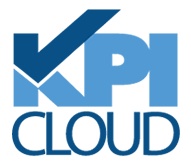by Manohar Rana
Student Curriculum Analytics provides the critical information required to analyze, support, communicate and plan a university curriculum effectively. The insight provided by this analysis can help different departments focus on the courses that require more attention, understand their student's enrollments patterns, and evaluate instructional staffing requirements.
University Student Erollment -- Key Metrics:
- Enrollment Count: A count of the number of seats occupied in a course for a specific term.
- Enrollment Limit: The maximum number of students that can be enrolled in a particular class for a specific semester. This value is set by the department listing the course.
- Percent Class Filled: The enrolled student count as a percentage of the enrollment limit for a class.
- Average Class Size: The average total enrollment count for all the classes (course sections) selected.
- Course at Capacity Count: The count of classes where the Student Enrollments have exceeded the Enrollment Limit for the course.
- Offerings Count: The count of classes that have one or more students enrolled.
- Rejected Student Count: How many students tried to get into a class, but were not allowed to enroll because they did not meet requirements, or the class was full, among other possible reasons.
- Student Credit Hours: The total number of credits that are earned by the students enrolled in a class.
- Waitlist Count: The number of students on the waitlist for a class.
- Waitlist Limit: The maximum number of students that can be on the waitlist for a class.
- Instructor Hours per Week: The average number of hours per week the instructor is teaching the class.
- Letter Grade Count: The count of all letter grades awarded in a class.
- Percent of Instructor Hours Taught: The percentage of the class instructor hours per week associated with the instructor. A value of 100% indicates that there is only one instructor teaching the class. A value of less than 100% indicates that the instructor is team-teaching the course section/class. The metrics are analyzed by different attributes such as Year, Semester, Departments, Course Subjects, Course levels, Instructor Function, etc.
Time Snapshots for Higher Education Analytics
Student enrollments change over a period of a course mainly due to students cancelling or dropping out of the courses. It is important to store the history of metrics for every snapshot period. The commonly used snapshot periods are Census, End of Term, and Weekly.
The historical trends of student enrollments also helps the departments to understand and make adjustments to the enrollment limits for the courses they offer. For example, by looking at the cancellations or rejected student count, the departments can plan their Waitlist Limit for next term to accommodate more students.
Teaching Credit
Some of the metrics are related to an Instructor and help understand the teaching workload. It is common for an Instructor to teach courses outside his home department or in other words we can say that a course is taught by an Instructors coming from different departments other than the department that listed the course. Hence it also becomes important to prorate the credit for teaching a class amongst different Instructors to fully understand their workload. This teaching credit is commonly prorated among the Instructors on the basis of their number of Teaching Hours per week.
Similar techniques are applied to prorating the Student Enrollments and Student Credit Hours to departments that listed the course and Pay departments of Instructors that are teaching the courses.
These key metrics helps the University to more accurately plan for and prevent any bottlenecks in student enrollment process.
 |
Manohar Rana is a Consultant at KPI Partners. He is a reporting an analytics specialist whose areas of professional focus includes Higher Educattion, Oracle Business Intelligence Enterprise Edition and the Oracle BI Applications. Visit Manohar's blog at at KPIPartners.com. |


